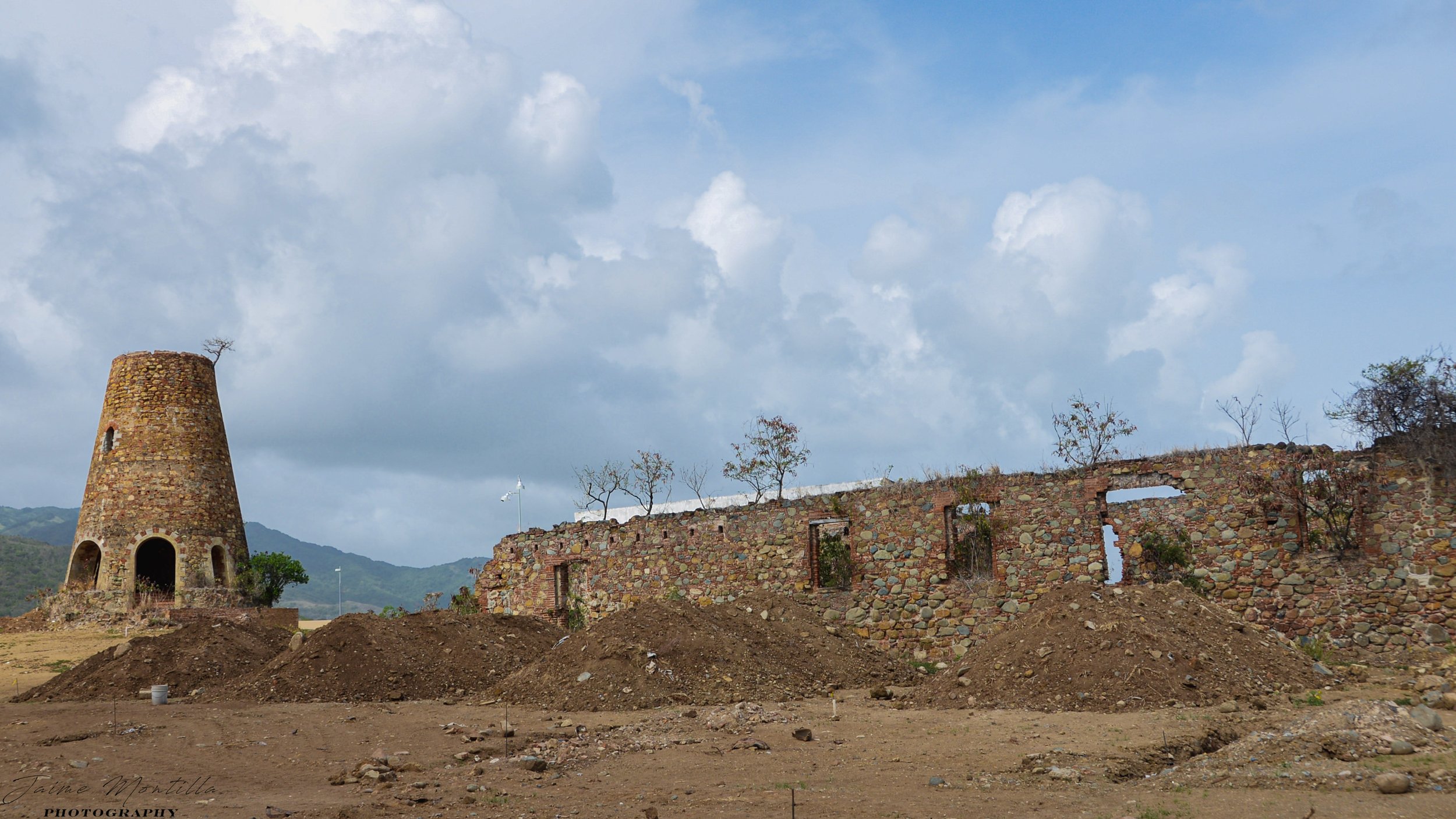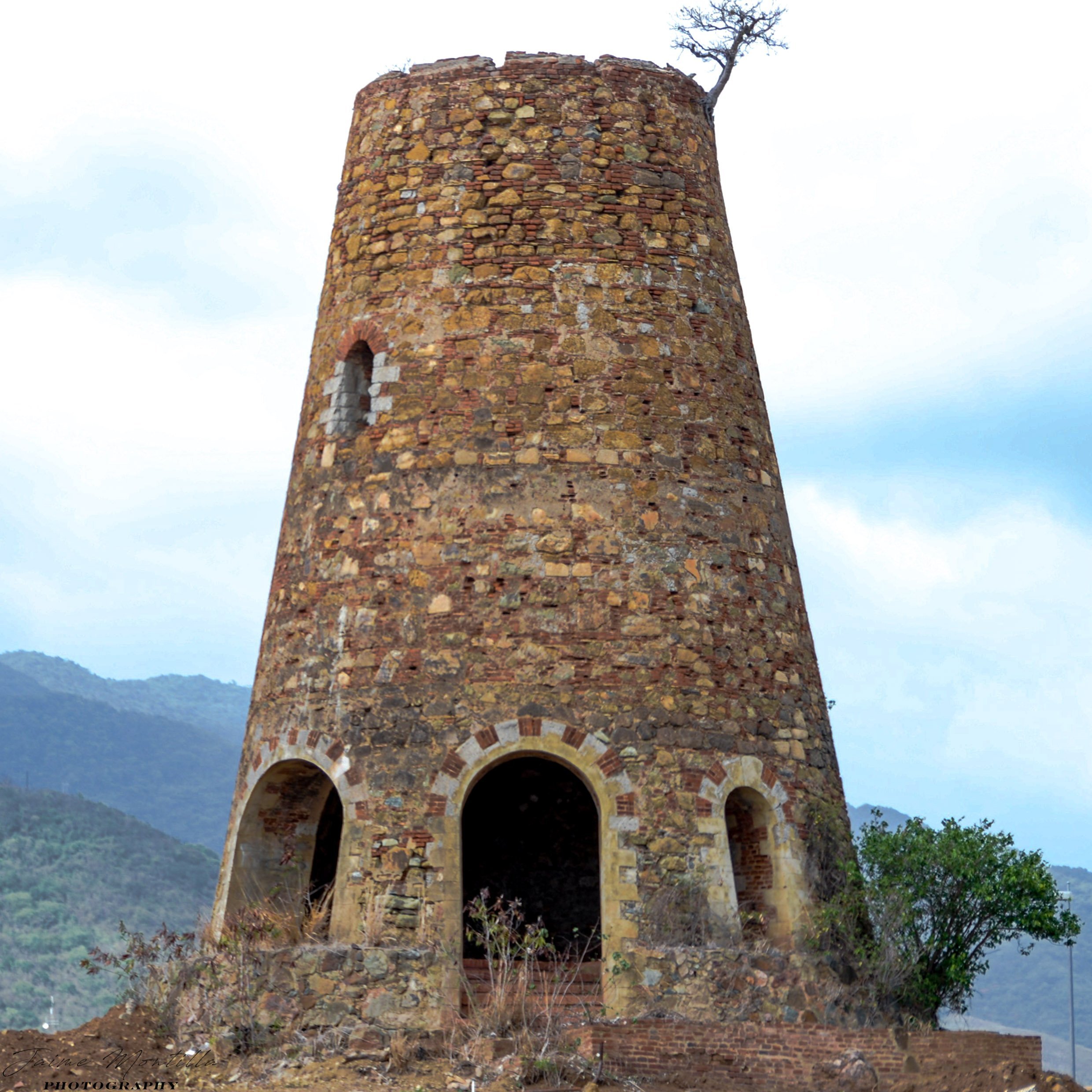
Hacienda Vives/Esperanza
Hacienda Vives was located in Barrio Machete, not too distant from Hacienda Carlota. At both locations there are still standing ruins of two of the six wind powered sugar mill structures that remain on the island. In his 1902 book Biografía de las Riquezas de Puerto Rico, historian Luis Ferreras Pagán established its origin in 1860, other sources establish it at 1825 which seem to be more accurate.
One of the pioneers of the sugar industry in the Guayama region was Catalonian immigrant Jacinto Texidor who arrived in Puerto Rico late in the 18th Century and in 1813 was Mayor of Guayama. In her essay Hacienda Esperanza, Molino Vives, Guayama Puerto Rico, Norma Medina-Carrillo PhD states that Hacienda Esperanza was established by Jacinto Texidor Sr. Although no date is given for its establishment, she states that in 1816 Jacinto Texidor paid the largest amount of taxes in the town of Guayama with 100 pesos. She also states that in 1825 Jacinto Texidor was the most important land owner in Barrio Machete which suggests by that year he was already owner of Hacienda Esperanza.
Texidor had two children that we are aware of, Isabel Texidor Moreno who married Juan Francisco Rivera Rivera and Jacinto Texidor Moreno (1792- ) who was married to Maria Josefa Vázquez. Jacinto Texidor Moreno owned a retail businesses in the town of Guayama. In 1826, records indicate that Jacinto Texidor Moreno was involved in the slave trade when he sold a shipment of 112 slaves for 25,768 pesos. It is therefore reasonable to believe that Jacinto Texidor Moreno though involved in the treaty of slaves was not involved in the business of Hacienta Esperanza.
Medina-Carrillo also states that in a report made by Mayor Ramón Anés to the Governor General of the Island, a fire broke on January 1, 1828 that destroyed all slave quarters, the warehouse and all the wood that was ready to be installed in the construction of a windmill, leaving standing only the manor house. It appears though, that later that same year the windmill was eventually built. Luis A. Figueroa in his book Sugar, Slavery and Freedom in Nineteenth-Century Puerto Rico states that it was under the ownership of Jacinto Texidor Sr. that the windmill was installed at Hacienda Vives.
Jacinto Texidor Sr. died in 1852. Guayama public records show that in 1853 his estate reports owning a hacienda valued at 170,214 pesos. By 1854, the hacienda consisted of 567 cuerdas and abutted to Hacienda Enriqueta. It is most likely the case that by virtue of his last Will and Testament, Texidor gifted the hacienda to his grandchildren Isabel Rivera Texidor (1825-1905) and Juan Francisco Rivera Texidor (1833-1902) who became sole owners of Hacienda Esperanza.
Spanish immigrant from Algeciras, Andalucia Juan Vives de la Rosa (1814-1892) married Isabel Rivera Texidor (1825-1905) the daughter of Juan Francisco Rivera Rivera and Isabel Texidor Moreno. Medina-Carrillo states in her writing that by Deed dated March 10, 1862 before Notary Public José Mariano Capó, Juan Vives de la Rosa acquired by purchase the ½ interest inherited by his brother-in-law Juan Francisco Rivera Texidor, thus becoming with his wife sole owners of Hacienda Esperanza. Subsequently, in efforts to modernize the irrrigation facilities of Hacienda Esperanza, Vives de la Rosa expanded the hacienda with the acquisition of Hacienda Emilia and Hacienda Guayabo Dulce which was owned by his brother-in-law Juan Francisco Rivera Texidor.
By 1872 Hacienda Esperanza was Guayama's fourth most productive hacienda behind Hacienda Santa Elena owned by Catalina and Josefa Curet Lozada the daughters of Pedro Curet; Hacienda Josefa owned by brothers Antonio and Jesús Maria Texidor Vázquez who also owned haciendas Puerto and Gregoria, and Hacienda Reunión owned by José Gual Frías. It remained in family hands until shortly before the death of Juan Vives de la Rosa on April 1, 1892.
On September 4, 1890 Hacienda Vives was purchased Rafael Amorós Alsina who in 1892 transfered title to the firm Amorós Hnos., at the time also owners of Hacienda Reunión. In 1906 Hacienda Vives was acquired by brothers Guillermo & Carlos McCormick Hartman and became part of the lands of Central Machete. In 1921 the McCormick brothers sold Hacienda Vives to Luce & Co., a company related to Central Aguirre.
In 1941 the lands of Hacienda Vives were part of a series of suits brought about by the Government of Puerto Rico in its efforts to enforce the 500 Acre Law and were acquired by the Land Authority of PR who later ceded the approximate 8 acre parcel where the windmill is located to the Institute of Puerto Rican Culture.
The cone shaped structure pictured below is the windmill that powered the grinding machinery. As stated above, in a fire that happened in January 1828, all the wood to be used in the construction of the windmill was burned. It is therefore reasonable to believe the windmill dates to ca. 1828. It is 40' high and has a diameter of 28' at the base.
The structure to the right of the windmill is the 137' x 30' processing plant built in 1902. It is not clear but reasonable to believe the juice flowed from the windmill to the processing plant by gravity. These remains are one of only six windmill powered sugar mills remaining on the island, the others being, La Milagrosa, Plazuela, Santa Ana, Carlota and Berdecia.
